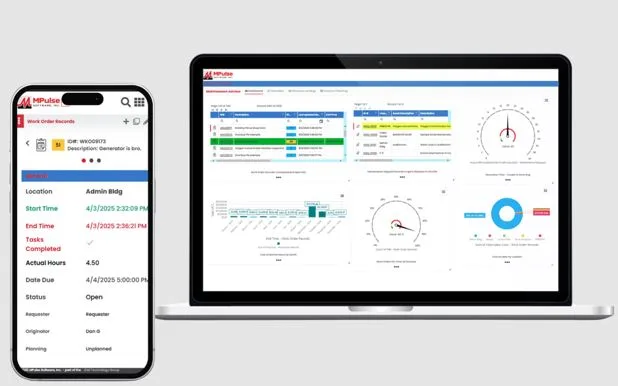The Future of Facility Maintenance: How Data-Driven Systems Improve Efficiency and Longevity
Facility maintenance plays a crucial role in keeping buildings safe, efficient, and compliant. Yet many organizations still manage maintenance operations through paper records, spreadsheets, or outdated software. These manual processes make it difficult to track equipment performance, prioritize repairs, and control costs.
Modern facility maintenance strategies are changing that. By adopting digital systems that centralize information and automate workflows, organizations can extend asset life, improve safety, and make better decisions about resource allocation.
What Is Facility Maintenance?
Facility maintenance refers to the ongoing care, inspection, and repair of buildings, equipment, and infrastructure. It includes everything from HVAC servicing and electrical repairs to safety inspections and janitorial work. The goal is simple: keep assets operating at peak performance while minimizing downtime and repair costs.
In industrial and commercial settings, the term can refer to several types of environments:
- Industrial facility maintenance: Factories, warehouses, and plants that rely on heavy equipment and production assets.
- Commercial facility maintenance: Office buildings, retail stores, and hospitals that prioritize occupant comfort and operational uptime.
- Facility building maintenance: The repair, cleaning, and upkeep of physical structures and utilities, such as plumbing and electrical systems.
Each of these environments has different needs, but all benefit from an organized, data-driven maintenance approach.
Why Facility Maintenance Matters More Than Ever
Aging infrastructure, rising energy costs, and stricter regulations make efficient facility operations a business priority. Poor maintenance planning leads to unexpected downtime, unsafe conditions, and wasted resources. Studies consistently show that preventive maintenance can reduce equipment failures by up to 40 percent and extend asset lifespans by years.
The real challenge is scale. A large maintenance facility may manage thousands of assets across multiple sites. Without digital visibility, teams struggle to track performance, schedule inspections, and verify compliance.
The Shift Toward Facility Maintenance Management Software
To stay competitive, organizations are turning to maintenance facility management solutions that automate scheduling, reporting, and asset tracking. These systems bring together data from multiple sources, giving maintenance teams full visibility into operations.
Platforms such as facility maintenance software from MPulse make this possible. By combining work order management, asset tracking, and preventive maintenance scheduling, MPulse helps teams streamline communication and optimize resources.
With such tools, technicians can receive assignments in real time, managers can monitor progress across departments, and executives can make data-backed decisions that improve performance.
Benefits of a Modern Facility Maintenance Approach
- Lower Downtime
Automated maintenance scheduling ensures assets receive service before they fail, keeping operations running smoothly. - Improved Cost Control
Tracking labor, materials, and equipment usage helps identify waste and reduce unnecessary spending. - Enhanced Safety and Compliance
Documentation of inspections and repairs simplifies audits and ensures regulatory requirements are met. - Sustainability and Energy Efficiency
Regular maintenance improves energy performance and reduces waste, supporting green building goals. - Better Communication Across Teams
A centralized maintenance facility management system ensures everyone has access to the same information, reducing miscommunication and delays.
Example: Industrial Facility Maintenance in Practice
Consider a manufacturing company with multiple production sites. Each site has hundreds of machines, HVAC systems, and safety equipment that require regular inspections. Without a digital system, maintenance requests are scattered across departments, and preventive tasks are often missed.
After implementing industrial facility maintenance software, managers can view the health of all assets in one dashboard. They can predict when machines need servicing, analyze trends in breakdowns, and ensure technicians focus on high-priority tasks. The result is a measurable reduction in downtime and maintenance costs.
How to Strengthen Your Facility Maintenance Program
- Conduct a full asset inventory to identify all equipment, systems, and building components that require maintenance.
- Set up preventive maintenance schedules based on manufacturer recommendations and operating conditions.
- Adopt a centralized system for managing work orders, tracking costs, and storing asset history.
- Train staff to use digital tools effectively and capture accurate maintenance data.
- Review reports regularly to identify recurring problems and improve long-term planning.
Conclusion: Building a Smarter, Safer Maintenance Facility
A modern approach to facility maintenance is more than a convenience. It is a strategic investment that protects assets, enhances safety, and improves efficiency across every level of an organization.
By leveraging digital solutions like facility maintenance software, businesses can move beyond reactive fixes and build a proactive culture of reliability. Whether managing an industrial plant or a commercial office, these systems provide the visibility and control needed to operate confidently and sustainably.



